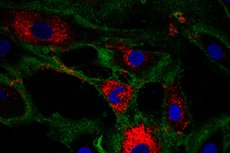New publications
Found a way to renew skin for 30 years at once
Last reviewed: 29.06.2025

All iLive content is medically reviewed or fact checked to ensure as much factual accuracy as possible.
We have strict sourcing guidelines and only link to reputable media sites, academic research institutions and, whenever possible, medically peer reviewed studies. Note that the numbers in parentheses ([1], [2], etc.) are clickable links to these studies.
If you feel that any of our content is inaccurate, out-of-date, or otherwise questionable, please select it and press Ctrl + Enter.

Scientists from the Babraham Institute have come up with a way to not only stop skin aging, but also reverse it. In a new study, they managed to restore the functional ability of "old" cells, thereby updating the biological age. The scientific world is already declaring a possible revolutionary breakthrough in the field of regenerative medicine.
Over the years, our body structures functionally weaken and our genome accumulates signs of age-related changes. Regenerative medicine seeks to find ways to reawaken or replace cells that have lost their strength. In this aspect, an important ability of the human body is the creation of "induced" stem cells, although to date scientists have not yet been able to clearly define the possibilities for the repetitive differentiation of stem cells into other variations.
The new technique makes it possible to cope with the problem of loss of cell identity. Specialists have discovered a clear equilibrium between cell reprogramming, which rejuvenates cells, and the possibility of regenerating their specific function.
About 15 years ago, scientists were already able to transform normal cells into stem cells. The whole mechanism of "restarting" stem cells lasts up to fifty days and involves four basic molecules called Yamanaka factors (after the scientist's name). Using a new technique called "transient restart of the maturation phase," the cells are reprogrammed in less than two weeks. During this time, all signs of aging are erased, and the cell structures themselves temporarily lose their individuality. Not completely restarted cells were given the opportunity to develop under normal conditions, in order to trace the possibility of returning their specific function. The genome study showed that the cells regained markers typical for fibroblasts: collagen started to be produced in the restarted structures.
To confirm rejuvenation, experts looked at all shifts among age-related traits, and examined a number of indicators of cellular aging. For example, the epigenetic clock indicator was evaluated: chemical signals in the genome indicate the age stage. Next, attention was paid to the transcriptome, which hides all the gene readouts that have been performed by the cell. Changes in these readouts directly indicated that the cells had become three decades younger - and not only did they look that way, but they also functioned like young cells. The renewed fibroblasts produced more collagen than the same but not restarted cells. Such a promising discovery indicates that entirely new therapeutic techniques will soon be available. In particular, it will be possible to heal wounds faster, prevent or treat Alzheimer's disease and cataracts.
Although this discovery is still being scrutinized, it is already considered promising for the future of medicine. According to the scientists themselves, this research could have very interesting implications for the elimination of age-related changes.
Source link babraham Institute
